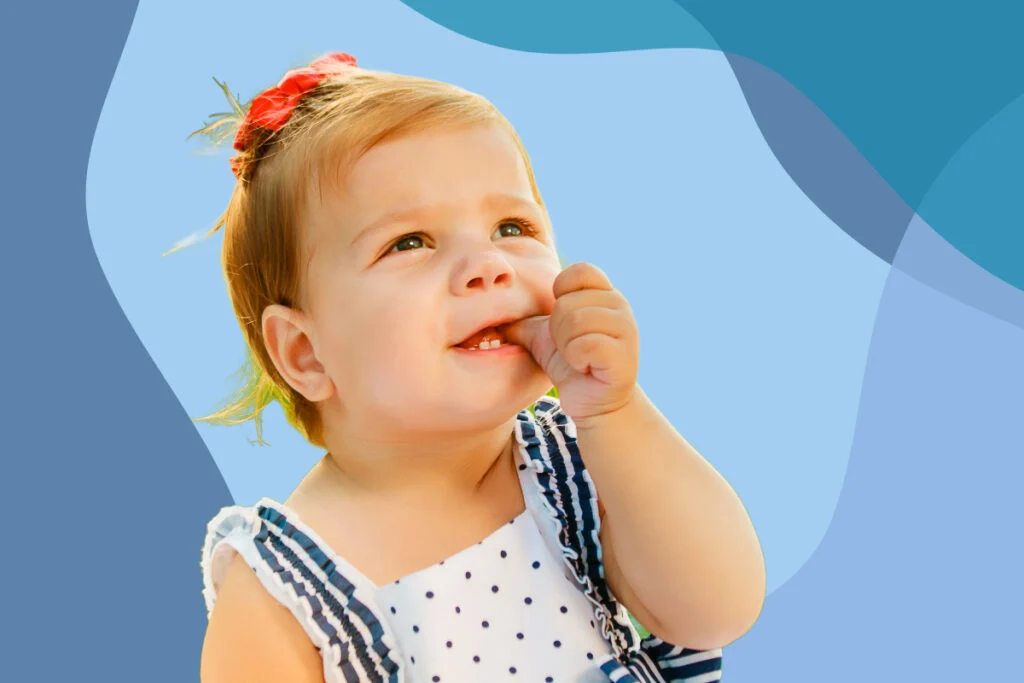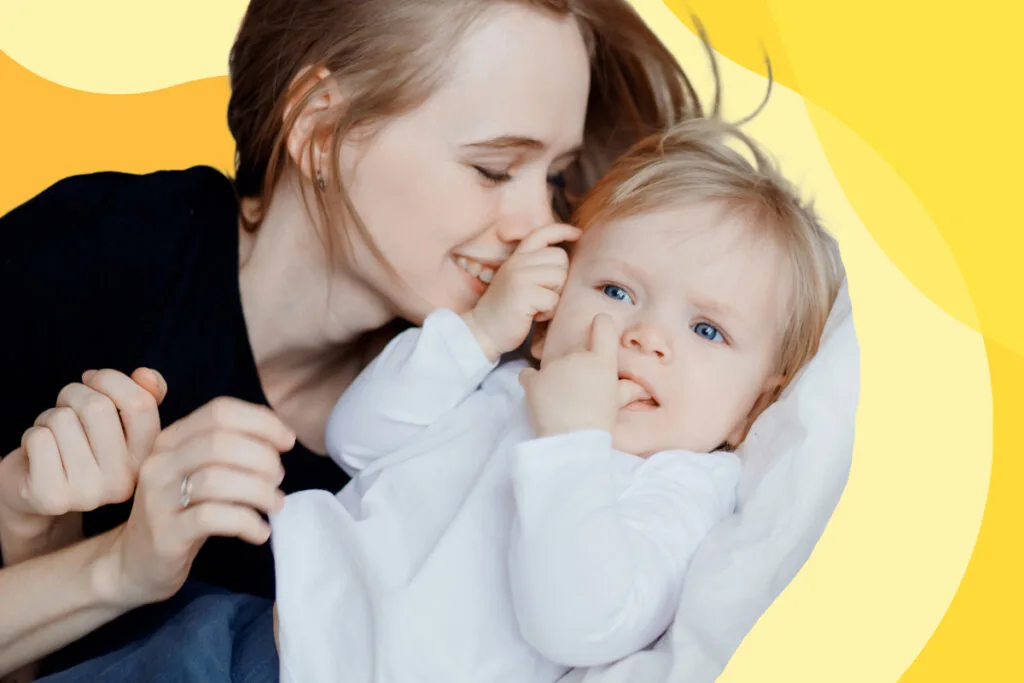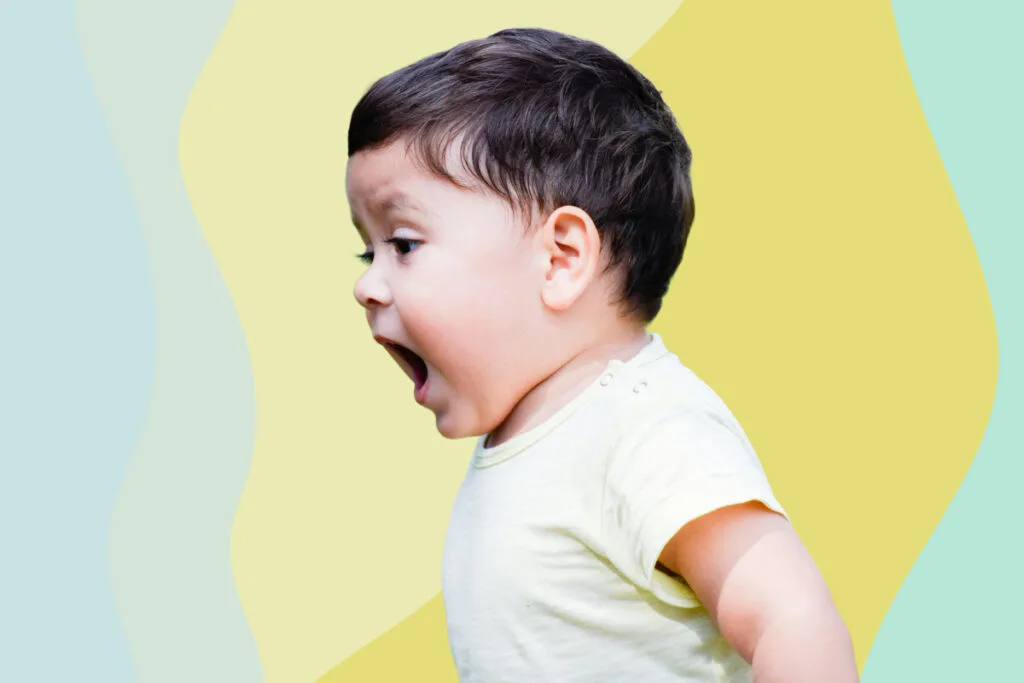- Importance of self soothing
- Maladaptive Toddler Self-Soothing Behaviors
- How to teach a child self-soothing techniques
- When can babies self soothe
TABLE OF CONTENTS
What is self-soothing
Self soothing is a form of emotion regulation that involves monitoring, evaluating, and modifying emotional reactions to calm oneself in distress. It primarily reduces negative emotions and stabilizes emotional arousal through self-directed behaviors and internal processes1. It is the act of calming and comforting oneself to reduce stress and anxiety to feel better. Rather than addressing emotions before they arise, self-soothing practices regulate them after they arise2.

Importance of self soothing to toddlers
To ensure their survival, babies are born with a mature arousal system to alert their caregivers to potential danger.
Their emotion regulation systems, however, are not well developed at birth.
Although babies engage in some self-soothing behaviors like thumb sucking and twirling their hair when they are upset, they cannot develop advanced self-soothing skills by themselves to handle difficult situations independently3.
Unless toddlers receive adequate developmental support, maladaptive self-soothing methods may develop, leading to later problematic behavior, such as oppositional behavior (children) or alcoholism (adults). Severe anxiety disorder in childhood can lead to panic disorder and other anxiety disorders in adulthood4.
Thus, self-soothing is essential for children, not only to fall asleep in the middle of the night or calm themselves in tantrums but also to develop effective coping skills that are useful throughout their lives.

Maladaptive Toddler Self-Soothing Behaviors
Here are some examples of toddler self-soothing behaviors that are maladaptive. They tend to be repetitive behaviors.
- Hair twirling
- Rocking
- Thumb-sucking
- Object (e.g.clothing , pacifier)sucking
- Fingernail biting
- Object (e.g. pencil) biting
- Cuticle picking
- Skin picking
- Nose picking
- Hair pulling
- Head banging
- Skin cutting
- Crying
- Eating

How to teach toddlers self-soothing techniques
Teaching babies and toddlers adaptive self-soothing techniques involves the following steps.
Co-regulate before self-regulate
A child cannot self-teach self-soothing in a vacuum.
Without experiencing it, babies will not know how to invent soothing on their own.
Self-regulation, therefore, is not something babies learn or develop by themselves. They need teachers and partners.
Parental intervention is required for babies and children to learn adaptive self-regulation.
As the first step, parents co-regulate with their children using warm, responsive interaction. They support, coach, and model to co-create a positive emotional state with the children5.
Don’t leave a crying baby or child to “learn to self-soothe”.
They learn by experiencing it, not inventing it.
Use self-soothing techniques
Parents can use the following common self-soothing strategies to soothe a distressed baby or young child during co-regulation.
- Redirect attention
In the early stages of arousal, a child’s attention may be redirected away from stress with some distraction. - Physical Touch
During infancy, contact comforts such as soothing touch and being hugged are crucial for easing distress6.
Physical touch can trigger the release of the hormone, oxytocin, which can activate the parasympathetic nervous system in the child to calm themselves7. - Rhythmic stimulation
The arousal of a baby’s stress response system can be reduced by continuous stimulation, such as rocking, swaddling, white noise, and the human heartbeat. - Sufficient duration and intensity
Depending on the developmental stage, the duration and intensity of stimulation for your child must be adequate and long enough to interrupt or diminish distress8.
Pay attention to cues
Having the right support at the right time is key to co-regulating.
A tuned-in caregiver can remove or lessen the impact of aggravating situations.
Paying close attention to cues and responding sensitively and consistently can go a long way toward preventing distress.
Observe the behavior to better recognize symptoms of predictable stress, such as tiredness, hunger, and boredom.
When your child shows signs of being irritated, comfort them in a consistent approach to help them alleviate the stress9.
Provide sensitive, responsive, and consistent care
Children don’t just learn how to self-soothe when distressed. Give-and-take interactions in everyday life that promote a secure attachment also contribute to emotional regulation.
Provide nurturing, consistent, and responsive parenting in daily interactions.
Responding to a young child’s need teaches them that they matter. Consistency teaches young children to trust others. Children learn how to connect with others reliably and joyfully when their parents are sensitive and nurturing.
Children are more likely to develop effective strategies and a sense of calm if they experience trust and form a secure attachment to their parents10.
When a child responds to the parent and the parent, in turn, responds to the child, a dialog begins, and a relationship forms.
The relationships we have with others often motivate us to change our behaviors, learn more about our feelings, and modify our emotions.
Help them practice
Learning to self-soothe requires practice, just like any new skill.
Allow mild to moderate stress for them to practice their calming techniques.
To develop healthy coping skills, children need mild and moderate stress, positive coping models, and scaffolding appropriate to their age11.
They observe and explore their big emotions and expressions as their parents soothe, encourage, and relate to them in different ways.
Be patient
Learning to self-sooth is a gradual process.
As children test ways to calm themselves, they learn through trial and error.
Often, caregivers feel distressed when their children are distressed or when they make mistakes. In response, they try to get rid of the feelings.
But it’s okay to have feelings, even if they are distressing.
Be patient as our children learn and practice to perfect their coping methods.
In stressful situations, they still require help soothing and regulating, but as they grow older and master this important skill, they become less dependent on others.
Self-soothing parents
Model an effective form of self-regulation.
To co-regulate with children, parents must exercise their own regulatory skills.
Demonstrate to your child how to manage strong emotions, such as overwhelm, anger, or burnout, in a healthy way.
We do a better job supporting our children when we are calm and even-keeled.

When can babies or toddlers self-soothe
An infant’s ability to self-soothe depends on the baby’s temperament, the environment, and their parents’ responses to their distress, which are influenced by their cultural beliefs, mental health, and experiences growing up.
Here are the factors that can affect when toddlers can learn to self-soothe.
Baby’s temperament
A child’s temperament determines how easily they can regulate themselves.
Different temperaments affect how strongly children experience and express their emotions.
Stimuli such as light and noise trigger different responses in them.
They also manage attention, changes, and transitions differently.
For example, babies who experience more intense emotions may have a hard time calming themselves. In contrast, those who are able to divert their attention from arousing stimuli tend to be more soothable and less affected by parents’ or others’ negative emotions12.
Environment
Adverse early environments can damage a child’s self-regulatory systems.
When children grow up under chronic stress, their stress-response system develops to adapt to dangerous and unpredictable situations.
The adaptations that allow children to grow up in adversity can impact their physical and emotional well-being and compromise their ability to self-soothe when they grow up.
Cultural belief
Different cultures’ values, beliefs, and parenting practices influence how self-soothing is learned.
Baby’s cries are common among those who have not yet learned to self-soothe and it is a part of the normal development process.
Even though crying bouts are similar across cultures and their timing is similar, the duration of crying bouts is shorter when breastfeeding on demand and carrying babies are more common, indicating better self-soothing capabilities in these infants13,14.
Physical and mental health
Parents’ own emotions are an important determinaing factor.
Babies whose mothers suffer from mental health issues such as depression and anxiety or physical health problems such as difficult pregnancies and traumatic births have more persistent crying at three months of age15.
Parent’s own childhood
A parent who was not treated sensitively and responsively as a child may have difficulty responding appropriately to their child’s emotional needs.
Practices such as hugging a child in a tantrum may be considered socially inappropriate for these parents.
Instead of seeing their lack of regulation as a manifestation of what their child cannot communicate, these parents may view it as a personal threat. Such cases prevent them from providing their child with the care they need, thereby delaying their development.

Final thoughts on self-comforting in children
It is important to know that parents of toddlers play a crucial role in the development of self-soothing skills in young children.
The child doesn’t learn to respect his or her feelings if we react to their emotions with anger or impatience. When we respond to children’s sadness and anger with calm behavior, we help them accept these emotions and find an effective way to live with them.
Find out more on emotional regulation and social emotional development.

References
- 1.GraÄanin A, Bylsma LM, Vingerhoets AJJM. Is crying a self-soothing behavior? Front Psychol. Published online May 28, 2014. doi:10.3389/fpsyg.2014.00502
- 2.Gross JJ. The Emerging Field of Emotion Regulation: An Integrative Review. Review of General Psychology. Published online September 1998:271-299. doi:10.1037/1089-2680.2.3.271
- 3.Diener ML, Mangelsdorf SC, McHale JL, Frosch CA. Infants’ Behavioral Strategies for Emotion Regulation With Fathers and Mothers: Associations With Emotional Expressions and Attachment Quality. Infancy. Published online April 1, 2002:153-174. doi:10.1207/s15327078in0302_3
- 4.Milrod B, Markowitz JC, Gerber AJ, et al. Childhood Separation Anxiety and the Pathogenesis and Treatment of Adult Anxiety. AJP. Published online January 2014:34-43. doi:10.1176/appi.ajp.2013.13060781
- 5.Murray DW, Rosanbalm KD, Christopoulos C, Hamoudi A. Self-Regulation and Toxic Stress: Foundations for Understanding Self-Regulation from an Applied Developmental Perspective. OPRE Report # 2015-21; 2015.
- 6.Harlow HF. The nature of love. American Psychologist. Published online 1958:673-685. doi:10.1037/h0047884
- 7.Dreisoerner A, Junker NM, van Dick R. The Relationship Among the Components of Self-compassion: A Pilot Study Using a Compassionate Writing Intervention to Enhance Self-kindness, Common Humanity, and Mindfulness. J Happiness Stud. Published online January 19, 2020:21-47. doi:10.1007/s10902-019-00217-4
- 8.Korner AF, Thoman EB. The Relative Efficacy of Contact and Vestibular-Proprioceptive Stimulation in Soothing Neonates. Child Development. Published online June 1972:443. doi:10.2307/1127547
- 9.Hiscock H, Jordan B. 1. Problem crying in infancy. Medical Journal of Australia. Published online November 2004:507-512. doi:10.5694/j.1326-5377.2004.tb06414.x
- 10.Troxel WM, Trentacosta CJ, Forbes EE, Campbell SB. Negative emotionality moderates associations among attachment, toddler sleep, and later problem behaviors. Journal of Family Psychology. Published online February 2013:127-136. doi:10.1037/a0031149
- 11.Wadsworth ME. Development of Maladaptive Coping: A Functional Adaptation to Chronic, Uncontrollable Stress. Child Dev Perspect. Published online April 1, 2015:96-100. doi:10.1111/cdep.12112
- 12.Compas BE, Boyer MC. Coping and Attention: Implications for Child Health and Pediatric Conditions. Journal of Developmental & Behavioral Pediatrics. Published online October 2001:323-333. doi:10.1097/00004703-200110000-00007
- 13.JAMES-ROBERTS I, BOWYER J, VARGHESE S, SAWDON J. Infant crying patterns in Manali and London. Child Care Health Dev. Published online September 1994:323-337. doi:10.1111/j.1365-2214.1994.tb00394.x
- 14.ALVAREZ M. Caregiving and Early Infant Crying in a Danish Community. Journal of Developmental & Behavioral Pediatrics. Published online April 2004:91-98. doi:10.1097/00004703-200404000-00003
- 15.Barr R. Colic and crying syndromes in infants. Pediatrics. 1998;102(5 Suppl E):1282-1286. https://www.ncbi.nlm.nih.gov/pubmed/9794970
